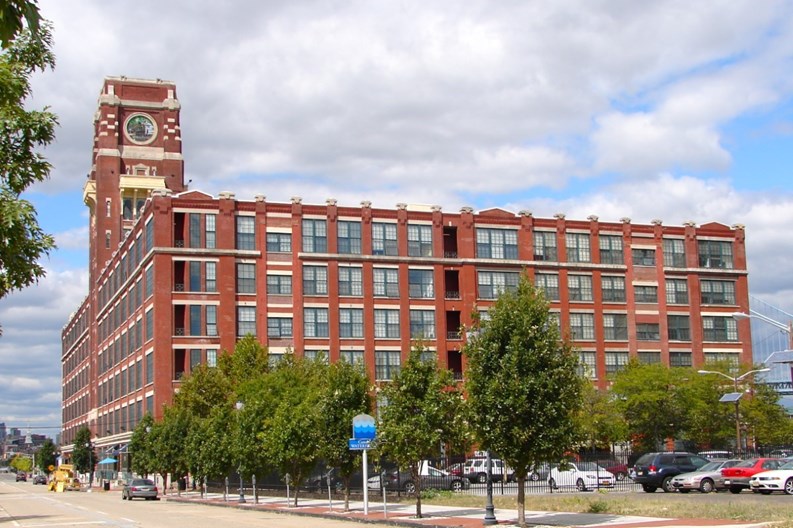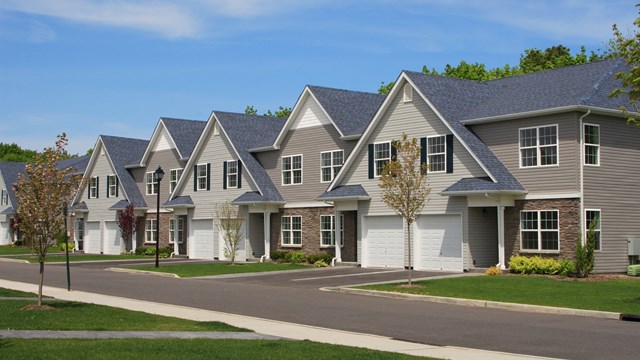Camden, New Jersey is located across the Delaware River from Philadelphia. About 77,344 reside in the city as of the 2010 U.S. Census. At its peak, its population swelled to nearly 125,000 in the 1950s. Over the years, Camden has been an economic and transportation hub for the area, and it is well known for its port and waterfront.
Early Years
The Dutch West India Company built Fort Nassau (located within the present boundaries of nearby Gloucester City, New Jersey), around 1626, and was the first European settlement in the area occupied by Camden. The area in the vicinity of Camden was central to the local fur trade. Europeans continued to settle there throughout the 17th century. Much of its growth directly resulted from the success of another Quaker colony across the Delaware River known as Philadelphia. The City of Brotherly Love, which was founded in 1682, soon had enough population to attract a brisk trade from West Jersey and Camden. Ferryboats soon sprung up to accommodate the river trading.
An economic and transportation hub, Camden’s status began to change in the early 19th century with the advent of the railroad. One of the U.S.'s first rails, the Camden and Amboy Railroad, was chartered in Camden in 1830. The Camden and Amboy Railroad allowed travelers to go between New York City and Philadelphia via ferry terminals in South Amboy, New Jersey and Camden. The railroad’s opening in 1834 spurred an increase in population and commerce in Camden.
Originally a suburban town with ferry service to Philadelphia, Camden evolved into its own city, as industry and neighborhoods grew. Camden prospered during strong periods of manufacturing demand. But like most American cities, Camden declined in the 20th century as its manufacturing base diminished and people moved away. Government, education and health care are the three biggest employers in Camden today; however, most employees commute to Camden and live in nearby suburbs such as Cherry Hill. Revitalization has occurred along the Camden waterfront and in the neighborhoods of Cooper Grant, Cramer Hill, and Fairview that have direct access to Philadelphia.
Birth of the Recording Industry
From 1901 through 1929, Camden served as the headquarters of the Victor Talking Machine Company, and its successor RCA Victor, the world's largest manufacturer of phonographs and phonograph records for the first part of the 20th century. RCA Victor contained one of the first commercial recording studios in the United States, where noted opera singer Enrico Caruso, among others, recorded. GE reacquired RCA in 1986.
In 1992, the state under the Florio Administration signed an agreement with GE to ensure that the Camden site would not close. The state planned to build a new high tech facility on the site of the old Campbell Soup Company factory and trade these new buildings to GE for the existing old RCA Victor Buildings. Later on, the buildings changed hands.
Housing and Neighborhoods
The so-called "Nipper Building" depicting RCA's famous "His Master's Voice" trademark in its tower windows has since been renovated into a 340-unit luxury apartment building called "The Victor." Building 8 of the complex will be rehabbed into luxury condominiums called "Radio Lofts." Both projects are the work of Dranoff Properties, a well-known Philadelphia development corporation that has specialized in these types of constructions. Another older building, Victor Building No. 2, is used to this day to house the Camden City Board of Education. Most of the other old RCA Victor buildings have long since been demolished.
From 1899 to 1967, Camden was also the home of New York Shipbuilding Corporation, which at its World War II peak was the largest and most productive shipyard in the world. Notable naval vessels built at New York shipyard include the ill-fated cruiser USS Indianapolis and the aircraft carrier USS Kitty Hawk. In 1962, the first commercial nuclear-powered ship, the NS Savannah, was launched in Camden. The Fairview Village section of Camden (initially Yorkship Village) was a planned European-style garden village built by the federal government during World War I to house New York Shipbuilding Corporation workers.
At Camden's peak, 10,000 workers were employed at RCA while another 40,000 worked at New York Shipbuilding. RCA had 23 out of 25 of its factories inside Camden and Campbell Soup was also a major employer. Situated on the Delaware River, with access to the Atlantic Ocean, the Port of Camden handles bulk cargo for transport throughout the globe.
Dysfunction in Government
Once thriving, Camden is today perhaps best known for its urban struggles. Three Camden mayors have been jailed for corruption, the most recent being Milton Milan in 2000. Since 2005 the school system and police department were taken over and operated by the state; the takeover will expire in 2012. In 2008, Camden had the highest crime rate in the U.S. with 2,333 violent crimes per 100,000 people while the national average was 455 per 100,000. Two out of every five residents are below the national poverty line.
n







Leave a Comment